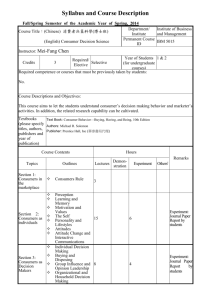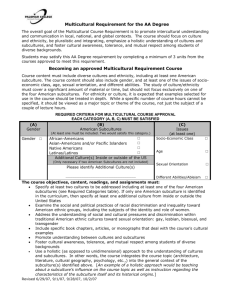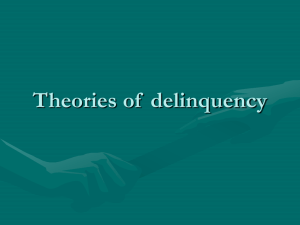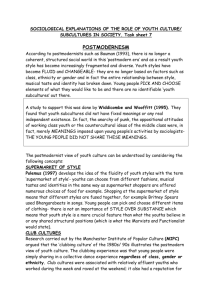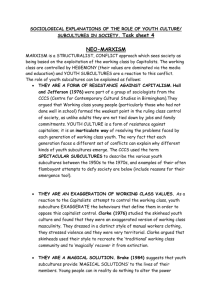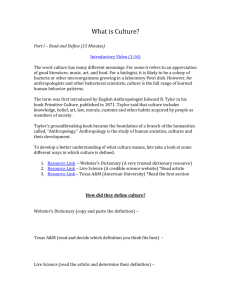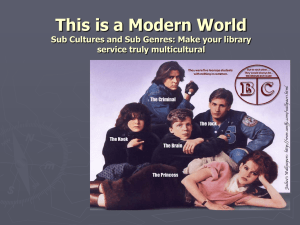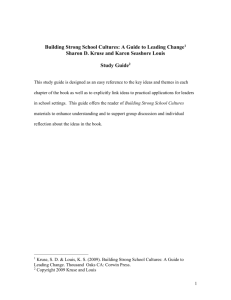Subcultural Theory File
advertisement
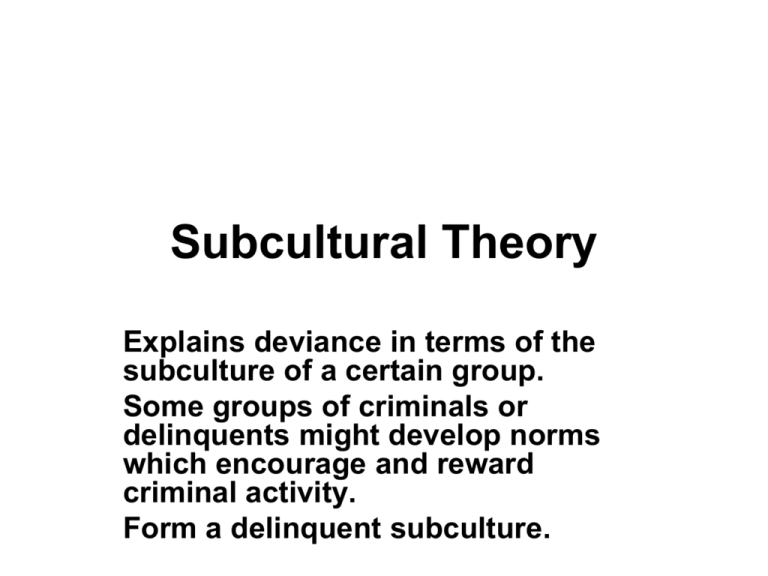
Subcultural Theory Explains deviance in terms of the subculture of a certain group. Some groups of criminals or delinquents might develop norms which encourage and reward criminal activity. Form a delinquent subculture. Albert Cohen • Albert Cohen attempted to explain why working-class youths commit criminal and anti-social acts. • He suggested that working-class youths suffer from STATUS FRUSTRATION. Status Frustration • Defined as failures by the wider society working-class youths experience status frustration. • They cannot achieve the legitimate goals. • They replace them with an alternative set of norms and values. • The working-class youths try and achieve status in other ways. • They may join a gang whose goals can be achieved. • A collective rather than an individual response. • Crime may be non-utilitarian eg joyriding, vandalism, not directed to monetary gain. • The young man gain status in each other’s eyes but also hit back at a society which has denied them the opportunity to succeed. Evaluation • Offers an explanation for non-utilitarian crime and collective deviance. Cloward and Ohlin • Point out that not all lower class youths will be able to achieve success through legitimate means. • Too many applicants results in selection. • Delinquency arises out of a reaction to the lack of opportunity to reach success goals through legitimate channels and the consequent adoption of illegitimate means to achieve them. Cloward and Ohlin – Opportunity Structures • Try to explain why delinquent subcultures take different forms – why some are mainly concerned with theft while others focus on violence. • Different social environments provide different opportunities for crime and deviance which in turn encourage the development of different delinquent subcultures. Types of delinquent subcultures – Criminal Subculture • Tend to develop in areas where there is a well-established pattern of adult crime. • There is an illegitimate opportunity structure. • Young men are provided with role models. Types of delinquent subcultures – Conflict Subculture • Tends to develop in areas where an illegitimate opportunity structure is absent, there is a high population turnover and a low level of social cohesion. • Little opportunity to succeed by either legitimate or illegitimate means. • Young men become frustrated and angry. • Respond with gang violence which gives them the opportunity to gain status from other gang members. Types of delinquent subcultures – Retreatist Subculture • Tends to emerge among those who have failed to succeed either by legitimate means or as members of either criminal or conflict subcultures. • ‘Double failures’ • Form retreatist subcultures based on illegal drugs. Evaluation • Develops Merton’s and Cohen’s theories. • Show that working-class delinquency is not simply concerned with material gain. • Give explanations for a number of different subcultures. • Tend to ignore overlaps between subcultures eg gangs involved in conflict subcultures often deal in drugs. How Useful are Subcultural Explanations • British evidence suggests structured gangs with a definite and enduring membership are unusual. • Most delinquent acts are committed by small, transient loosely structured friendship groups. Matza and Sykes • Delinquent subcultures imply workingclass youths are committed to gangs. • They point out that most working-class youths do not engage in criminal activity regularly and those who do give it up in early adulthood. Matza and Sykes • Most working-class youths do not engage in criminal activity. • Adolescents of all classes are members of a leisure class. • Leisure activities involve a search for excitement and adventure to demonstrate their masculinity. Evaluation • Subterranean values exist side by side with other values but are only expressed in certain situations eg football • Young people attach greater importance on subterranean values, they have more leisure time. • If they break the law there is added excitement. • They emphasise the similarity between delinquents and young people in general. Parker (1974) and Corrigan (1981) Portray working-class adolescent delinquency as much less structured and systematic. Their studies showed that working-class youths used delinquency to inject some action into their leisure which frequently involved hanging around McRobbie and Garber • Found girls’ teenage activities reflected what was expected of them. • Spent their time in appropriately ‘feminine’ persuits. • Concerned with being attractive and sexy and getting a boy.
